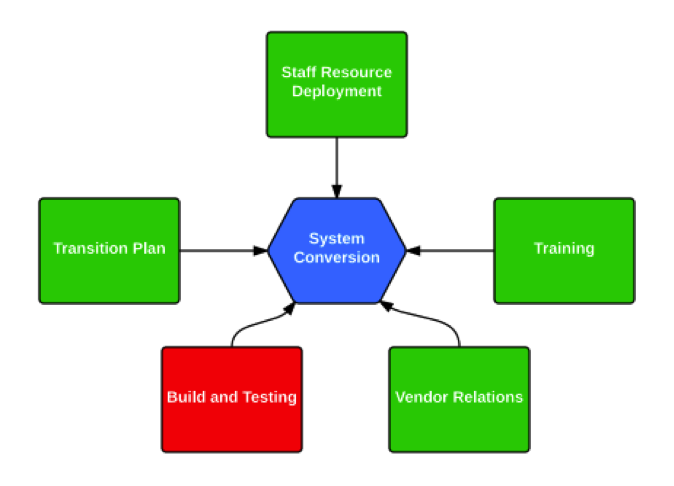In the white paper entitled Healthcare System Conversions – Key Points To Consider we outlined three types of conversions (System Upgrade, New Platform/Same Vendor, and New Platform/New Vendor) and five points to consider when planning for a system conversion.
This article reviews the points to consider for Build and Testing for each type of conversion. Your organization must clearly define the resources needed to be assigned to the conversion or upgrade project. All three types of conversion have similar build and testing, but there are specific points to consider for each type of conversion.

Build and Testing
Version Upgrade

The upgrade documentation will clearly define the impact on the organization’s process. If your organization has some custom build in a previous version, define what changes, if any, need to be migrated to the new version of the system. On many occasions, this step is missed and custom reports that you use on a daily basis may be lost with the upgrade unless it is noted during the build and testing.
- Workflow
- Identify and clearly understand any workflow changes that are necessary for the implementation of the upgrade.
- Identify the impact on all parts of the organization.
- This is a great time to review the “way that you do things today,” and optimize it within the context of the new upgrade.
- Enhancements
- Define the enhancements available with the new upgrade and determine if these are appropriate for your organization
- Identify the system capabilities and what should be implement now versus at a future time.
- Build Plan – if required with the upgrade
- Develop a work plan that details all components of the build including appropriately assigned resources.
- Use this plan document to measure build progress on a weekly basis and to identify constraints to successful completion.
- Testing Plan
- Document the test plan that is appropriate for your organization. The vendor may supply a template for you to start with, but take the time to clearly test all scenarios unique to your organization.
- Unit testing – testing of the individual component of the system. For example, pharmacy, medication administration, clinical documentation, and financial billing.
- Integrated testing – upon completion of the unit testing, implement a full-scale integrated test integrating all of the components of the system.
- Check points
- Schedule weekly/bi-weekly “check-point” meetings to measure the project progress. Include all appropriate personnel in this weekly meeting (at least one representative from each impacted area). Bring in other stakeholders to the meeting as appropriate.
New Platform/Same Vendor or New Vendor


The conversion to a New Platform with the Same Vendor or New Vendor has several build and testing considerations. Not only do you need to focus on the continual build/testing of updates to order sets and PowerPlans in the current system, you need to clearly define the build and testing requirements for the new platform.
- Workflow
- Identify and clearly understand any workflow changes that are necessary for the implementation of the new platform. Now is the time to “fix what is broken” with the previous version as well as take the opportunity to optimize processes through capabilities of the new platform.
- Identify the impact on all parts of the organization.
- Enhancements
- Define the enhancements available with the new platform and determine if these are appropriate for your organization.
- Identify the system capabilities and what should be implement now versus at a future time.
- Build Plan
- Develop a work plan that details all components of the build including appropriately assigned resources.
- Use this plan document to measure build progress on a weekly basis and to identify constraints to successful completion.
- Testing Plan
- Document the test plan that is appropriate for your organization. The vendor may supply a template for you to start with, but take the time to clearly test all scenarios unique to your organization.
- Unit testing – testing of the individual component of the system. For example, pharmacy, medication administration, clinical documentation, and financial billing.
- Integrated testing – upon completion of the unit testing, implement a full-scale integrated test integrating all of the components of the system.
- Check points
- Schedule weekly/bi-weekly “check-point” meetings to measure the project progress. Include all appropriate personnel in this weekly meeting (at least one representative from each impacted area). Bring in other stakeholders to the meeting as appropriate.
CLICK HERE to schedule an appointment to discuss your needs with HealthcareIS.


Comments